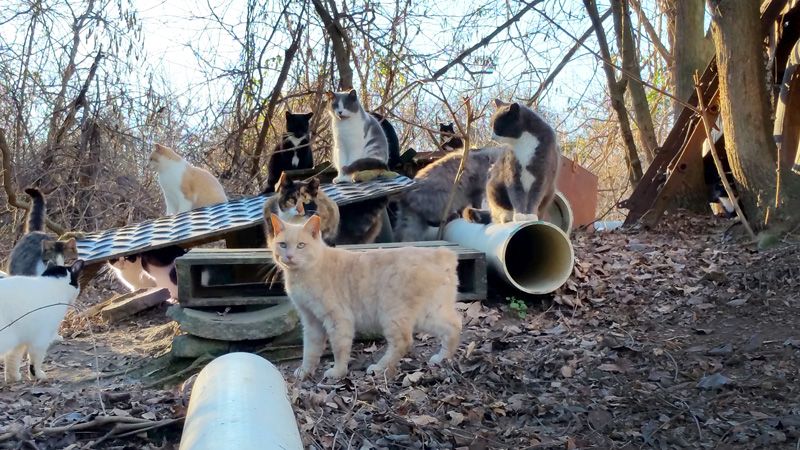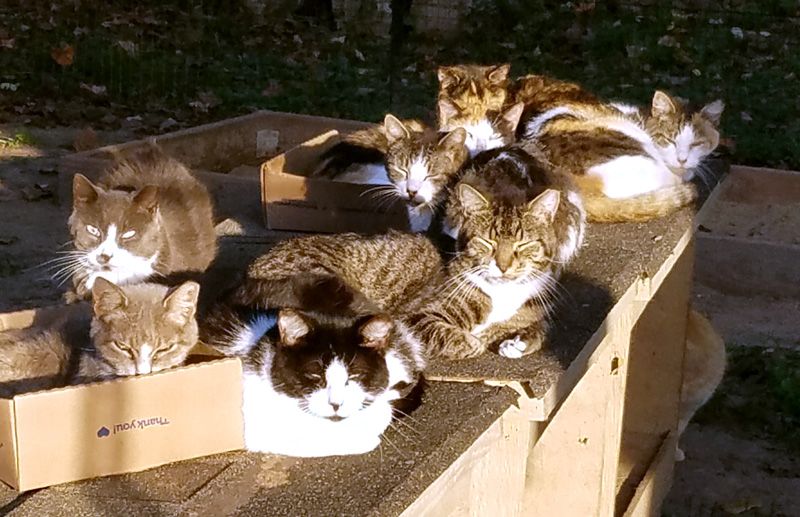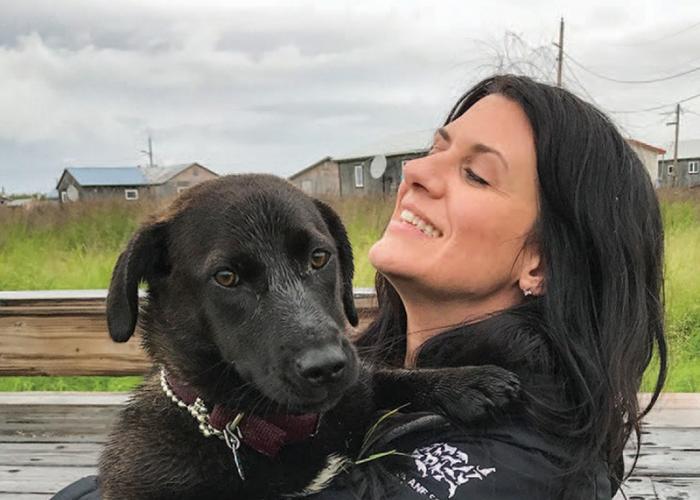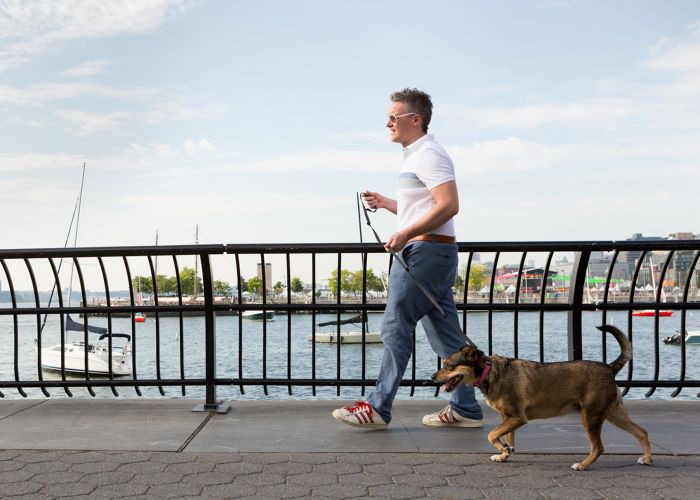Neighbor-Hood watch

When Alyssa Ellison started working as an animal control officer in Spotsylvania County, Virginia, in 2013, the sheriff ’s office was fielding as many as 80 calls a month about a group of cats near the city of Fredericksburg.
It was a sad situation that had vexed the area for decades: A colony of cats and kittens had overrun a property that housed a well-drilling business and bordered a busy commercial strip. The cats sometimes loitered outside the Pizza Hut and Arby’s at the intersection of Hood Drive and Jefferson Davis Highway—the heavily traveled U.S. Route 1.
Callers complained about cats roaming the restaurant parking lots—where they scrounged for discarded scraps and cat kibble left by well-meaning passersby—and sometimes getting hit. The cats’ caretaker, a middle-aged woman who was a part-owner of the well-drilling property, was uncooperative, rendering previous attempts to trap and neuter the cats largely unsuccessful, and the land was soon going to be advertised for sale. To make matters worse, the area had become a dumping ground for unwanted cats.
The call that shook “The Hood,” as the area became known, came in late 2015. A concerned resident reported a silver tabby with a large growth on her neck. “It looked like the cat was trying to grow a second head,” Ellison recalls. After the caregiver failed to get the cat veterinary care, Ellison met with the sheriff, who convinced the property’s other owners to grant Ellison and rescue volunteers access to the land and its resident cats.
The property, which was separated from the restaurant parking lots by a partial board fence, was filled with drilling equipment, old vehicles, discarded PVC pipes and junk piles. The stench of ammonia and feces was overpowering, Ellison remembers. Early estimates pegged the cat population at about 200; many were emaciated and sick. The only water source was a puddle in a driveway.
“I ’ve dealt with hoarding situations before, but never anything on this scale,” says Ellison. “It was incredibly overwhelming.”
She knew her shelter couldn’t deal with hundreds of additional cats and that euthanizing them wasn’t a solution. Fortunately, the caller who had reported the cat with the growth had rounded up more local animal lovers. With advice and encouragement from Ellison, they formed a nonprofit—named Operation Hood—to tackle the problem once and for all.
The group’s first president , Liz Bensman, lined up veterinarians to spay and neuter. On Jan. 2, 2016, volunteers visited the property to assess the situation and quickly realized the problem was bigger than expected—there were more than 400 cats and kittens. Sadly, they also discovered about 15 dead cats and kittens amidst the junk and debris.
Operation Hood created a Facebook page to solicit donations and held a meeting to recruit volunteers for fundraising, feeding and trapping. Before long, the cats had insulated shelters and committed volunteers delivering them food and fresh water every day.
Since there was nowhere to house the cats offsite, the group initially returned healthy neutered ferals to the property. They placed sick or injured cats in foster homes and worked to adopt out friendly felines.
A few months later, Operation Hood got zoning approval to erect about 600 linear feet of Purrfect-brand cat fencing on a volunteer’s property in a nearby suburb. Feral cats who were too old to be tamed were released into “The Fence,” which includes insulated sheds, feeding stations and outdoor litter boxes.
“Sanctuaries aren’t typically the best resolution for free-roaming cats, yet at times they can be a vital part of the mix,” says Danielle Bays, community cats program manager for Humane World for Animals. “When a situation like The Hood arises, when you realize that the typical things you can do to improve a colony site—like remove trash, install shelters and provide additional food—aren’t enough to make the location safe for the cats, you need to pull out all the tools available.”

Altogether, Operation Hood removed 322 adult cats and 128 kittens from the original site. By May 2018, 156 had been adopted; 140 were living at The Fence; 20 were in foster homes; and three were in pet store adoption programs. The rest were either transferred to other rescues, placed in managed colonies via TNR efforts or euthanized for medical issues.
Volunteers provide daily food, clean water and litter box maintenance at The Fence, which can house up to 150 cats at a time. Some are available for adoption as pets or barn cats. “But some, because of their age or special needs, we’re just going to let them live their lives out there because it wouldn’t be fair” to uproot them, says Debbie R. Bryant, Operation Hood’s current president and a systems engineer with Raytheon.
The property once known as The Hood went up for sale, but volunteers continued to monitor the area for strays. The group is also tackling feral cat colonies in other parts of the community and educating people about trap-neuter-return, says Mary Anderson, the group’s vice president and a secretary with the Fredericksburg school system.

Ellison presented a case study on the Operation Hood initiative last year at the National Animal Care & Control Association’s annual training conference. Her message for other ACOs: “No matter how large the colony, how large the property, or how obstinate the people, a humane solution can be found for the cats and people involved.”
In February, she started a new job as executive director of the Humane Societ y of Warren County in Front Royal, Virginia. She’s now an auxiliary deputy with the Spotsylvania sheriff ’s department—in essence a part-time volunteer—and keeps in touch with her Operation Hood friends.
Looking back, Ellison says her initial goal “was to stop getting calls about cats behind the Pizza Hut.” She had no idea at the time that this would lead to one of the most challenging—and memorable—cases of her animal control career.
The key to saving so many cats was the partnership with the community and everyone’s willingness to embrace a creative solution, she says.
“It took the help of the community and to have them volunteer and be so willing to help. Your shelters and your law enforcement can’t do anything without the backing of the community. And if the community is not willing to get behind you and support you, you’re not going to get anything done.”







